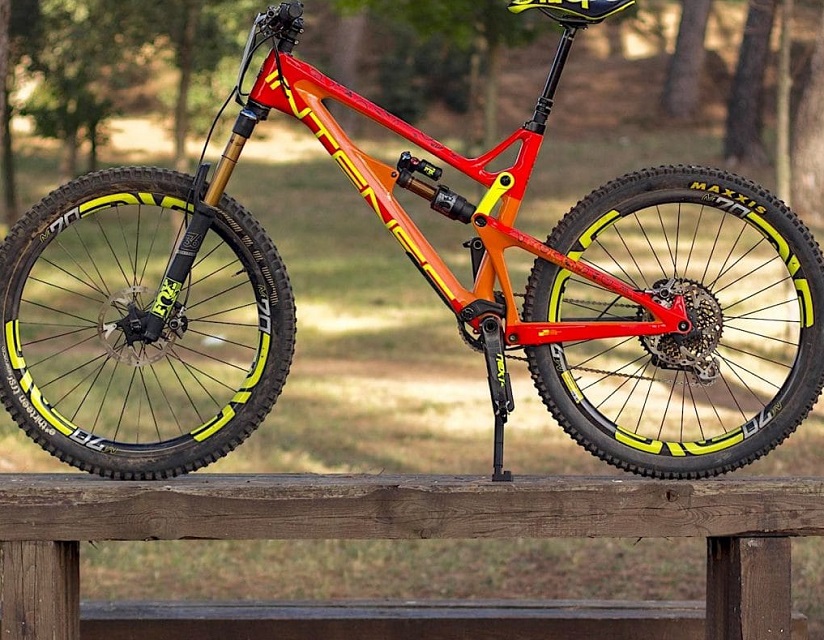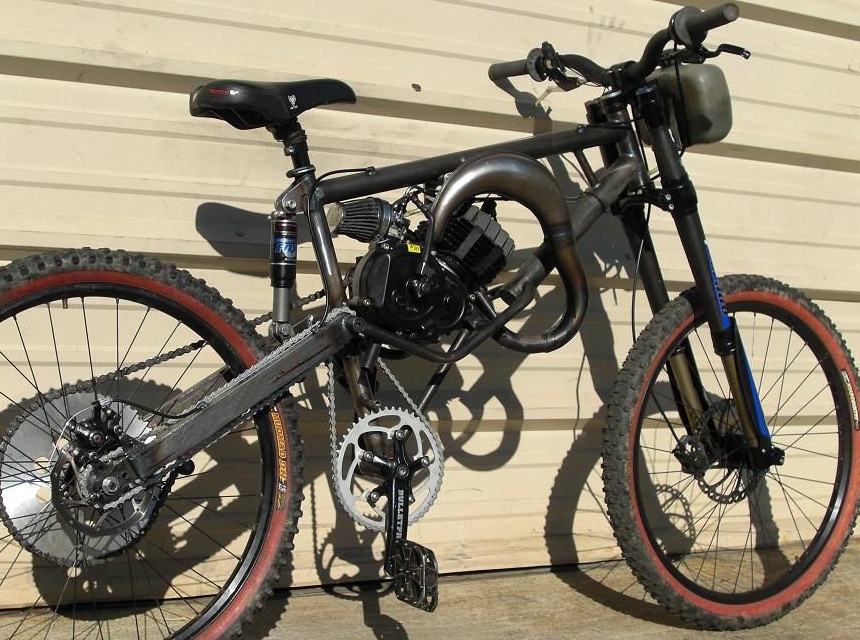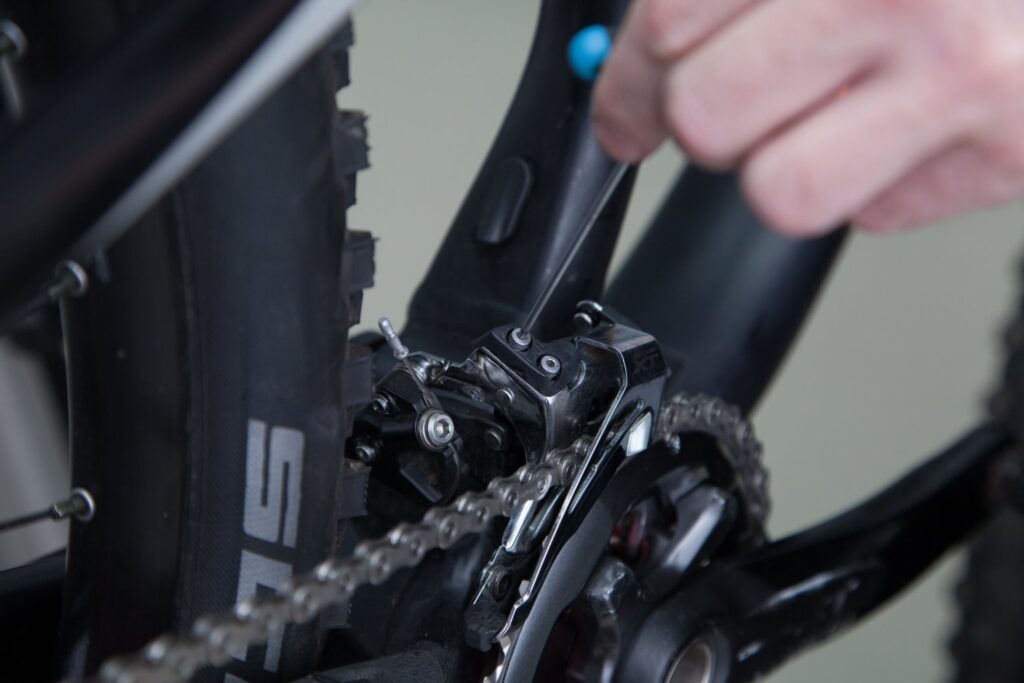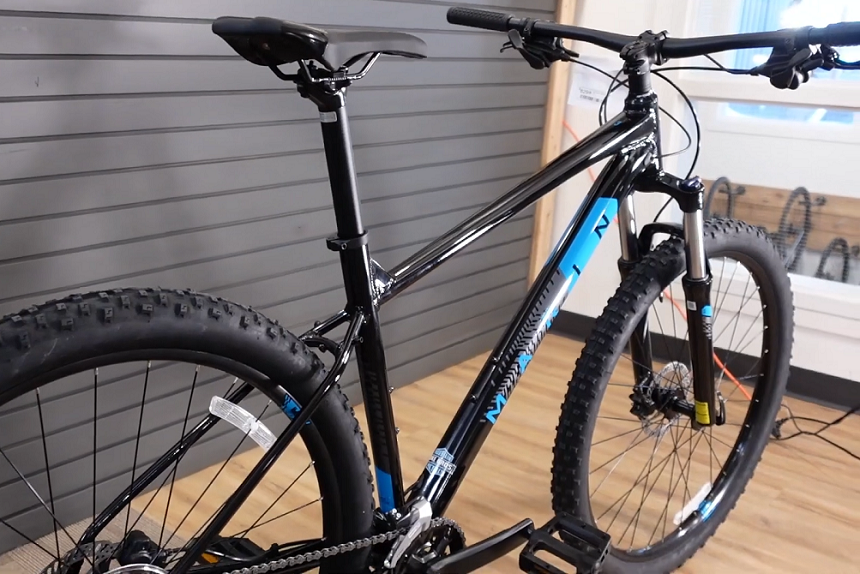- Trails
-
Bikes
-
Gear
-
Tips & Tricks
-
About us


Many of you may have a mountain bike and yet you never go to the mountain. You use it mainly to move around the city. This situation is not uncommon.
However, as the name implies, these bikes were designed for the mountains. Each type of mountain bike has characteristics that give it advantages in different terrains and uses. However, if you don’t use the bike often on mountain trails or terrains, then you’re misusing it and you may not be getting the right efficiency from it. However, you can install hybrid tires on a mountain bike. This way, you can convert the mountain bike to a hybrid bike and it will be faster and easier to pedal. Now, let’s take a closer look at how you can use hybrid tires for a mountain bike.
Cross-country bicycles that are ridden on trails to the compact surface with few roots and stones have tires with smaller and shorter spikes. These have lower rolling resistance while having high efficiency on the trails.
On mountain, off-road, and enduro bikes, the tires have good traction when the trails get more technical. The center of the tires typically features angled studs that are close together, while the edges feature larger studs that bite into the ground on tight turns. Many enduro riders use different tires on the front and rear. They install the most grippy tire at the front and the one with the lowest rolling resistance at the rear.
The downhill riders use tires that optimize traction. In the mud, the tires with large studs sufficiently spaced apart more easily evacuate the accumulated dirt.
The average mountain bike tire today is between 2.2 and 2.6 inches wide. Wider tires offer good protection and good grip, as well as higher self-damping. They are smoother, offer more grip, and have greater safety. On the other hand, wide mountain bike tires are heavier and since the contact surface is higher, their rolling properties are also bad.
Not every tire is made for every terrain. The tire profile has a major influence on the grip. Coarse tread tires bite into the soft or muddy ground, while their coarse treads often buckle on hard ground and the grip decreases. Tires with small/low to no studs such as the Continental Tour Ride Hybrid Bike Tyres roll well and have a larger contact surface on hard ground and develop more grip in the process, but slip away when wet because they cannot claw their way into the dirt.
A mountain bike tire is not just made of a little bit of rubber. The tire consists of several layers of different rubber hardnesses. It may well be that the tread in the middle has a harder rubber compound than the coarse side lugs. A softer rubber compound offers more grip, but higher rolling resistance and wear. With a hard rubber compound, it is exactly the opposite. That is why a soft mixture is often used on the front tire and a hard tire on the rear wheel. Here, too, the manufacturers have their own names again, such as Schwalbe with their Addix compounds, Vittoria with their 4C compound, and Maxxis with 3C TripleCompund Maxx Speed, Maxx Grip, and Maxx Terra.
If you specifically live in a dry area, you can use 26 x 1.10 Michelin Wild Run’R Advanced Slicks, which are very similar in profile to those on the road, and allow reaching good speeds without much effort, since friction is very low. Normally changing the size of the tire also involves changing the size of the tire tube.
If you want to modify your mountain bike to turn it into a city or hybrid tires bike, you can make some simple changes that will make the behavior of the bike consistent with the use that you are really going to give it.
First of all, you must replace the tires with hybrid tires on your bike since those of mountain bikes have an excessive profile and tread to be used on paved surfaces. Normally the current mountain bikes have 26, 27.5, and 29 inches x 2.10. For a hybrid bike, a 26 x 1.50 or 26 x 1.20 will be enough. This way, you will also reduce weight in one of the most important areas of the bike, the wheels.
So what is a hybrid bike tire? Tires of hybrid bikes give the best of two styles Trusted Source www.nytimes.com . They combine the features of a touring and mountain bike. They are designed with specific threads that make them ideal for off-road and pavement conditions. For example, the Kenda K838 Tire is thicker than those on a road bike. This gives it greater stability and greater comfort. It can be used on a commuter bike, a cruiser bike, or an urban bike.
Hybrid tires are thinner than mountain bike ones, with lesser studs. The wheels also have a high pressure and the rims used are light like those of road bikes.
Hybrid tires vary from smooth to semi-smooth. A semi-slick tire features a smooth tread in the center and small studs at the edges to give you a grip when riding on unpaved roads. If you are riding in the winter, you might be interested in purchasing studded hybrid tires because of their excellent traction on ice.
First of all, it is better to choose light and well-rolling tires. Puncture protection, reflective elements for added safety, and anti-wear components also make the difference. We find several types of tires on the market designed for hybrid bikes. These include rigid, balloon, flexible, winter, tubeless, and tubular bikes.
Depending on your bike and the type of trips you do, wider tires provide more comfort and narrower tires generally provide a better ride because they generate less friction with the road.
The width of a hybrid tire is between 28 and 42 mm. Although 700c hybrid tires are usually between 35 and 45 mm. The wider tires will be fitted to the comfortable hybrid bike tires as the name suggests, for more comfort even on bumpy roads. This tire width is also used for electric hybrid bikes to provide greater stability due to the weight of the motor and battery.
Thinner tires are used on performance hybrid bikes because they make rolling easier by providing less resistance on the road. They are designed to tackle tough roads with control and confidence.
The stud or ‘thread’ affects the performance of a tire on a given surface. Typically hybrid tires offer a semi-smooth mixed surface that features a mix of light studs on the edges and a smooth tread that grips well on asphalt.
The ratio of smooth tread and studs varies from model to model. It is your usage that will determine the type of tire you want to have on your hybrid bike. On some very smooth cycle paths, tires with a rather smooth profile will be sufficient. Studded tires like the Schwalbe Marathon Winter are more suitable for winter biking when using an urban bike.
The carcass of the tire, which is the tire framework, is made from a rubber compound that can vary from brand to brand and model to model. The number of threads per inch determines the flexibility of the tire and its durability. Hybrid tires are stiffer and therefore contain fewer threads per inch. This makes them more durable, but less ‘rolling’ tires than road bike tires. The bead of the tire is often made of steel which adds to the stiffness of the tire and weight. However, they are less expensive than foldable tires which have a Kevlar bead. Tires with a Kevlar bead are lighter and of better quality.
Hybrid bike tires are designed to be driven in the city under all possible conditions. This is why several brands offer anti-puncture layer technologies to ensure greater durability for the tire. Brands like Schwalbe and Continental offer several tires with this type of technology.
The hybrid tire designed specifically for driving in winter conditions, in cold weather, on snow, and on ice is a high-performance studded tire of different widths, designed with Winter rubber, RaceGuard technology, K-Guard, or Kevlar/Nylon puncture protection.
For maximum efficiency on the ice, reduce your pressure. Conversely, increase it on dry roads to optimize performance and reduce road noise.
MTB bikes are prepared for use in the field or the mountains. But what if you want to use them around the city? So, can you put hybrid tires on a mountain bike? Yes, you can. This will let you turn a mountain bike into a hybrid. Traditional mountain bikes are designed solely to be adaptable to uses on mountainous terrains and trails. Asides from the wheels, there’s no particular difference in the build of the bike.
The idea is to adapt an old MTB that you no longer use or that you use less frequently. It is a great opportunity to give it a “second life”.
First of all, each conversion responds to personal needs.
It’s not just a matter of switching from one type of bike to another, but of adapting a bike to your practice.
In some cases, and depending on the internal width of your rim, you may not be able to fit hybrid tires. 44mm wide tires can become quite restrictive for hybrid use. So of course, it is possible, but it will not be ideal in terms of yield!
At this time, and if your rim is at least 28 mm wide, having a 2nd pair of wheels may be possible. Wheels suitable for urban use on which you could fit thinner tires for the city. So you could keep one bike for two uses. Then you can have your wheels with the wide, studded tires for your weekend MTB outings. Then assemble your wheelset intended for the city to go to work during the week for example.
If having two pairs of wheels is obviously a significant additional cost, it would on the contrary save you the purchase of a second bike!
Although a hybrid bike tire is a hybrid of the mountain bike tire and the road bike tire, there are still distinct differences.
Hybrid tires are more ideal for use in the city, in the snow, and on mountain trails. Meanwhile, MTB tires are used on bikes in the mountainside or on rough and off-road terrains.
Hybrid bike tires are thinner and a bit smoother than MTB tires. Also, MTB tires are spikier and full of studs to be able to have traction with rough ground.
Installing hybrid tires on a mountain bike is the best way to optimize the use of your MTB in the city. Hybrid tires bring the benefit of both road bike and mountain bike tires. That means, changing the tires doesn’t mean sacrificing the real purpose of the bike. Hybrid bikes can be used in mountain terrains that are not too rough and can also be used in the city as a road bike, although, you won’t be getting enough speed and other advantages as you may with a road bike.




